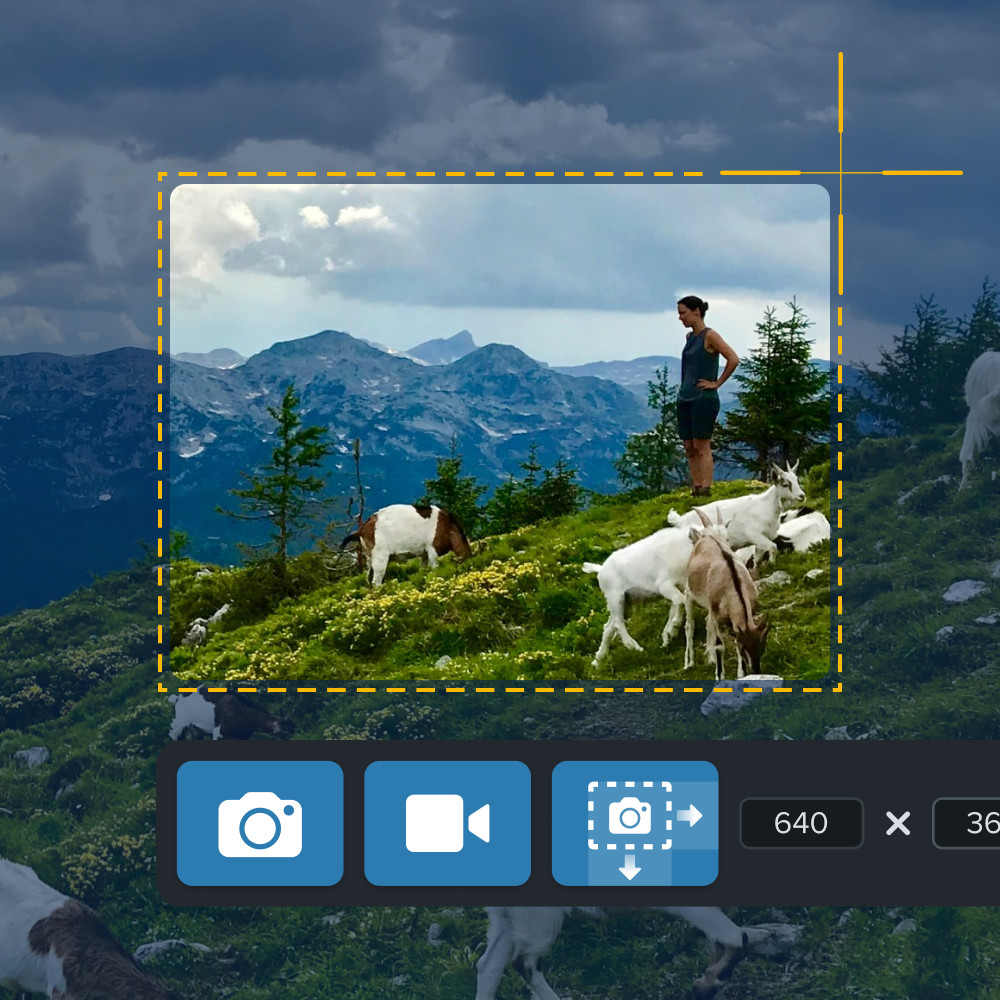A high-resolution photo is crucial for sharp, clear images, especially for printing and enlarging. Understanding what constitutes a high-resolution image ensures professional-looking results for various applications. This article delves into the details of high-resolution images, exploring their characteristics and significance.
 Someone capturing a screenshot of a mountain scene with a person and goats using Snagit, showing cropping tools on the screen.
Someone capturing a screenshot of a mountain scene with a person and goats using Snagit, showing cropping tools on the screen.
Defining High Resolution in Digital Images
High-resolution, often abbreviated as “hi-res,” refers to an image with a high density of pixels, resulting in superior image quality. Digital images comprise tiny squares of color called pixels (picture elements). These pixels blend to form the complete image. A higher pixel density translates to a sharper, more detailed image. Zooming in or enlarging a low-resolution image reveals individual pixels, creating a blocky or “pixelated” appearance.
![]() small, high resolution image next to the same image, larger but with lower resolution.
small, high resolution image next to the same image, larger but with lower resolution.
This pixelation occurs when an image is stretched beyond its pixel capacity. Early video games often displayed pixelated graphics due to limited memory and processing power. Today, pixelation typically arises from excessive enlargement, zooming, or printing from a low-resolution source.
 pixelated image
pixelated image
High-Resolution vs. Low-Resolution Images
Low-resolution images usually have around 72 pixels per inch (PPI), suitable for web use due to screen display limitations and faster loading times. High-resolution images, however, boast at least 300 PPI, essential for quality printing and avoiding blurry results. The higher pixel density ensures sharp lines and details, crucial for professional prints representing brands or other important materials.
Identifying High-Resolution Images
Determining image resolution requires more than a visual assessment. File size can be misleading. The most reliable method involves checking file properties within image editing software like Photoshop or TechSmith Snagit. These programs reveal the image’s DPI and pixel dimensions.
When to Use High-Resolution Images
Choosing the appropriate resolution depends on the image’s intended use. Here’s a breakdown of common scenarios:
Screens and Monitors:
While high-resolution might seem ideal for screens, digital displays have pixel limitations. Using excessively high-resolution images won’t enhance visual quality and can slow down loading times. Low to medium resolution suffices for screen-based applications.
Posters:
Large posters generally benefit from high-resolution images to maintain clarity when scaled up. However, viewing distance matters. Posters viewed from afar might not require ultra-high resolution. Intermediate resolutions offer a balance between clarity and file size.
Printing:
Printed materials demand high-resolution images (minimum 300 DPI) for crisp, clear results at a standard viewing distance. This ensures professional-quality business cards, brochures, and other printed materials.
 Screenshot of a document about puffin migration patterns with a section for changing styles highlighted.
Screenshot of a document about puffin migration patterns with a section for changing styles highlighted.
Artwork and Fine Photography:
Capturing intricate details is paramount in artwork and photography. High-resolution preserves subtle nuances, textures, and shading crucial for impactful visuals. However, online portfolios might utilize lower resolutions for optimal web performance.
Nature Photography:
High-resolution is essential for nature photography to capture the intricate details and vibrant colors of the natural world. Sharpness and clarity are vital for showcasing the beauty of nature in stunning detail.
Conclusion
Understanding what constitutes a high-resolution photo is fundamental for achieving desired results in various applications. Whether for print, web, or display, selecting the appropriate resolution ensures optimal clarity, detail, and visual impact. Choosing between high and low resolution depends on the intended use and desired outcome. A high-resolution image is an investment in quality, preserving details and ensuring professional results.
